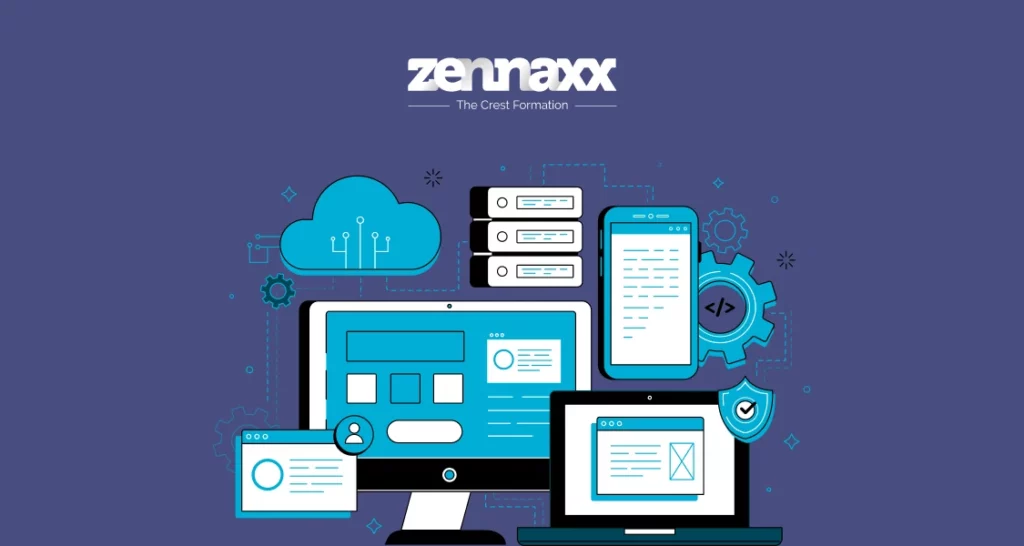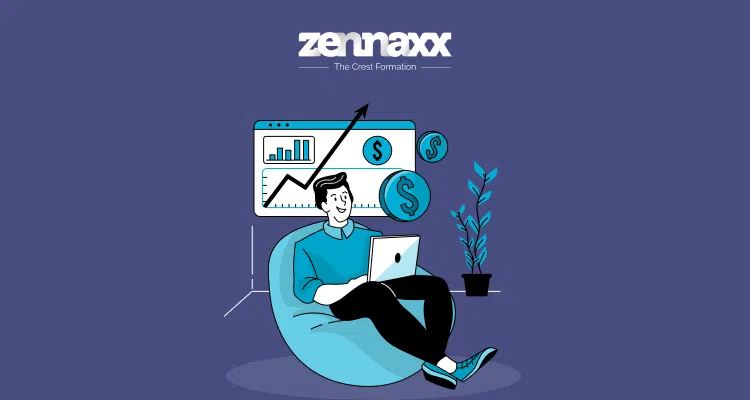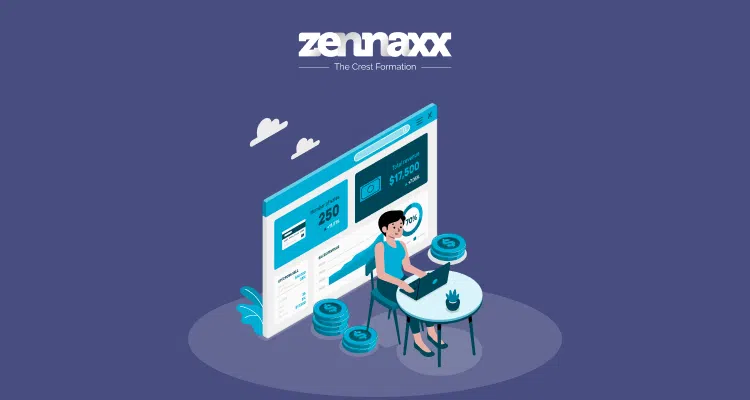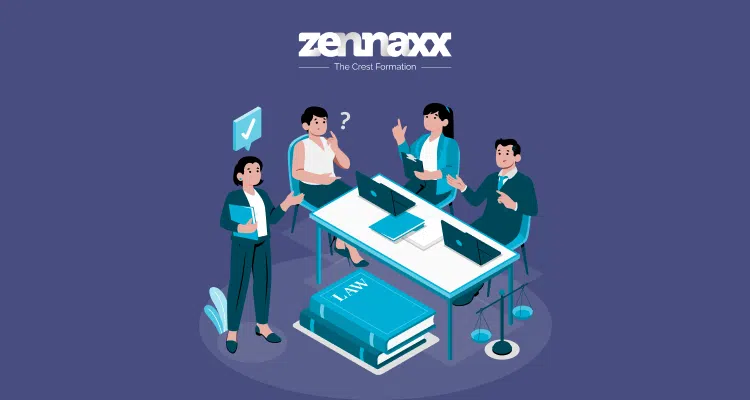Let’s rewind to the dawn of computers, a global sensation. Fast forward to today, where businesses harness the internet, with Software as a Service (SaaS) at the forefront.
Explore the evolution and latest trends in the dynamic world of SaaS
The year 2023 starts with the new rise of AI in technology and industries. 2023 gives us lots of upheaval in innovation in SaaS. As we enter 2024, SaaS product will continue to reshape how we view tech Industries.
By 2025, most company apps will be SaaS. This is because SaaS is growing and affecting the market. The global SaaS market is already big and will keep getting bigger. Spending on public cloud services will reach $591 billion.
The business looks for maintenance, updating, and a smooth experience when start own Software applications. When SaaS paltforms are always best in providing everything easily. Without any extra tackle, this platform gives you a smooth experience.
SaaS applications upgrade every year with a bunch of features. And make customers more satisfied with new features at a low cost.
Industries need to grow quickly with high-quality services for better customer expectations. This SaaS product is competitive and cutting-edge.
So, we have to improve the platforms and technology with innovation. In this blog, we will delve into a detailed discussion of the top SaaS industry trends in 2024. We will explore the new technologies that are shaping SaaS products in the current year.

Rise of AI and Machine Learning Future in SaaS industries
In 2024, software companies in the industry are developing AI-driven SaaS platforms that offer smart, automated applications for data centers. They also have advanced chatbots and virtual assistants.
Machine learning helps you collect data from history. It also helps you analyze small movements of customers.
Around 82% of software as a service (SaaS) providers in the industry accepted and implemented artificial intelligence (AI) and machine learning in the SaaS market. In 2024, SaaS companies and providers will upgrade their products with Artificial Intelligence (AI) and Machine Learning (ML).
This will improve user experience. SaaS platforms provide various types of communication options. Email, ChatBoat, and Facebook already run with the use of AI software and tools in today’s market.
But customers prefer a personal touch in communication. Natural Language Processing and machine learning software tools can help to deliver a personal touch in client communication on an AI platform.
Market benefits of using AI in SaaS development
AI software platforms are revolutionizing the industry, offering a wide range of cutting-edge tools in SaaS solutions.
Explore how these developments can impact your business and drive sales growth. Let AI algorithms continuously optimize across all devices and marketing channels in the SaaS industry without your constant intervention. Stay on top of the latest trends in the AI and SaaS industry. It is the SaaS trend of 2024.
Save Time with Advancements in SaaS Technology
In the SaaS industry, spending endless hours on mundane tasks like report preparation is a thing of the past, thanks to AI. AI has revolutionized the way we work by automating these repetitive tasks. This is just one of the many trends that are shaping the SaaS industry.
Industries and businesses can do next-level analysis using Next-generation SaaS Platforms in the AI industry. With AI out of the picture, use your time in the SaaS industry for more valuable, creative, and critical tasks that need a human touch.
Planning SaaS software development?
Ready to elevate your software projects? Partner with us for seamless software solutions.
Precise Segmentation Made Easy
Step into the future of the SaaS industry with smart AI-powered auto-segmentation Cloud-based Software Trends. Marketing analytics in the AI-powered SaaS industry can effortlessly identify similar user behaviors and patterns.
It doesn’t need AI. In the SaaS industry, AI effortlessly categorizes different customer groups, eliminating the need for constant human involvement.
In the SaaS industry, it is crucial to incorporate AI technology in your business solutions. Software as a Service (SaaS) is an example.
It helps nurture leads effectively. It also helps the AI in the SaaS industry decide how often to send messages in line with your marketing efforts. If you don’t have Artificial Intelligence (AI) in the SaaS industry, focus on finding real insights. Plan for the future based on the best ways.
Blockchain Integration in SaaS Platforms in 2024
Blockchain has two main features: decentralization and tamper resistance. It improves security and trust in SaaS platforms. It brings transparency to the SaaS industry and makes transactions traceable and verifiable.
Smart contracts are part of this system. The future of SaaS is improved by combining different cloud computing systems onto one platform. SaaS revolutionizes business operations by providing a centralized platform for cloud computing.
Blockchain in SaaS platforms is a good way to manage data and make it more secure. It also helps with automation and adds new features. Combining different cloud systems into one platform makes SaaS better.
Blockchain is transparent and secure, which is important for industries with rules. It also protects against identity theft and gives users control over their digital identities.
Cryptocurrencies and blockchain make payments easier in SaaS platforms. They improve efficiency and reduce reliance on banks.
This is why SaaS companies use blockchain. It helps with security, transparency, and efficiency in the future of SaaS. Blockchain helps SaaS platforms work together. This means data can be shared easily.
SaaS makes business processes more integrated and efficient. It lets businesses access software over the internet, so they don’t need to install it on their computers. This helps with collaboration and sharing data between departments.
Using SaaS can make organizations work better and be more productive.
Embracing Edge Computing for SaaS Solutions
Edge computing is a cool new way to make SaaS better. It brings the processing power closer to where it’s needed. This makes SaaS faster and more reliable. It reduces the time it takes for things to happen.
It’s especially important for real-time SaaS apps that need quick responses.
Consider the example of Alexa, the smart speaker. Typically, it sends most computing tasks to Amazon’s servers.
However, with edge computing, smart speakers in the SaaS industry could handle and process user requests directly on the device. This not only improves efficiency but also reduces the dependency on external servers, making it ideal for SaaS applications.
If you’re thinking about adding edge computing to your business strategy, that’s a smart decision for your SaaS business.
Benefits of Embracing Edge Computing in SaaS Solutions:
Sensitive information is processed closer to its origin. This minimizes the risk of data exposure during transit to centralized cloud storage servers in a SaaS environment.
This advances SaaS technology with a growing focus on data protection. It also boosts user confidence in adopting SaaS solutions for their business needs.
1. Improve Security
SaaS reduces the risk of data exposure during transit to centralized cloud servers. Processing sensitive information closer to its origin aligns with the growing emphasis on data protection in the SaaS industry. This, in turn, enhances overall system security.
2. User Confidence
Mitigating data exposure risks is crucial. It enhances security. It boosts user confidence in adopting SaaS solutions for their business needs.
Knowing that sensitive information is processed locally in a SaaS environment contributes to a more secure user experience. This also makes the user experience more trustworthy.
3. Optimized Resource Utilization
Edge computing is efficient. SaaS distributes computational tasks across the network, maximizing resources. This optimization improves resource utilization. It contributes to the overall cost-effectiveness of SaaS solutions.
They offer improved performance, lower latency, and reduced costs. Additionally, SaaS solutions enhance security, increase user confidence, and optimize resource utilization.
This approach aligns with the evolving landscape of SaaS technology and data protection. It is a wise choice for businesses seeking a competitive edge in the SaaS industry.
Want to Automate Your Business Process With a Software Solution?
Zennaxx, a leading software development firm in Canada, has delivered 700+ bespoke solutions spanning various industries.
Multi-cloud Adoption in the SaaS Industry
SaaS Multi-Cloud Solutions is a great Evolution of Cloud Computing Services. The future of SaaS improves by bringing together the benefits of different cloud computing systems onto one platform.
Software as a Service (SaaS) is revolutionizing the way businesses operate by providing a centralized platform for various cloud computing systems. The challenge? Making sure all these tools work well together. That’s where the SaaS Multi-Cloud Solution steps in.
It makes it easy to connect SaaS apps across various cloud providers and see everything in one place. Plus, it keeps an eye on security, compliance, and performance of SaaS across all the clouds in real-time. This way, you can be sure of your saas automated data centre trend.
Many companies offer cloud services, like Amazon, Microsoft, and Google. Some cater to small businesses or specialize in certain areas. Because of this, many tech executives use multiple cloud providers.
In fact, a study found that over 87% of tech leaders use two or more SaaS providers. Another study from 2019 showed that 81% of organizations use SaaS. Using multiple cloud providers in the SaaS industry is different from hybrid cloud solutions.
SaaS improves by bringing together different cloud computing systems onto one platform. Choosing different cloud providers for SaaS is helpful because it allows you to use the best one for each job.
This makes it easier to quickly turn business ideas into secure SaaS solutions and helps with hiring skilled personnel in the IT job market.
Personalization and Customer Experience Enhancement in SaaS
Surprisingly, 86% of buyers are willing to spend more for a better customer experience. This stat alone highlights the crucial role exceptional customer service plays in the SaaS landscape.
Personalization in SaaS is like a tailor-made suit. It focuses on two main areas: product design and customer support. It caters to both B2B and B2C sectors. The goal is simple. Create customized solutions that align with each user’s unique needs.
Product Personalization: This involves tailoring Software to suit a user’s preferences. Think of customizable features, insightful dashboards, tools designed to meet individual user requirements.
Customer Support Personalization: It’s all about putting the user front and centre. Every interaction becomes more than a ticket; it’s a story, a context. Recognizing this context speeds up issue resolutions. It also builds a deeper level of trust with the customer.
Responsive customer support has a big impact on the customer satisfaction. It builds trust and loyalty when they quickly and helpfully respond.
Dropbox is a good example because they offer 24/7 support and listen to user feedback to make their platform better. This makes users happier and reduces the need for support tickets. It’s all about giving users the tools they need to succeed on their own.
Conclusion: Harnessing innovation for future SaaS success
SaaS trends 2024 is marked by several key trends that are shaping the future of Software as a Service. The integration of AI and ML enhances user experiences.
It also provides businesses with valuable insights. Blockchain is revolutionizing security and transparency in data management, identity, and payments.
Edge computing is improving SaaS performance with reduced latency and optimized resource utilization. The adoption of multi-cloud solutions offers flexibility and addresses talent acquisition challenges.
Personalization and customer experience are crucial for success. Businesses need to embrace these trends. They must innovate for future success in the world of Software as a Service.


